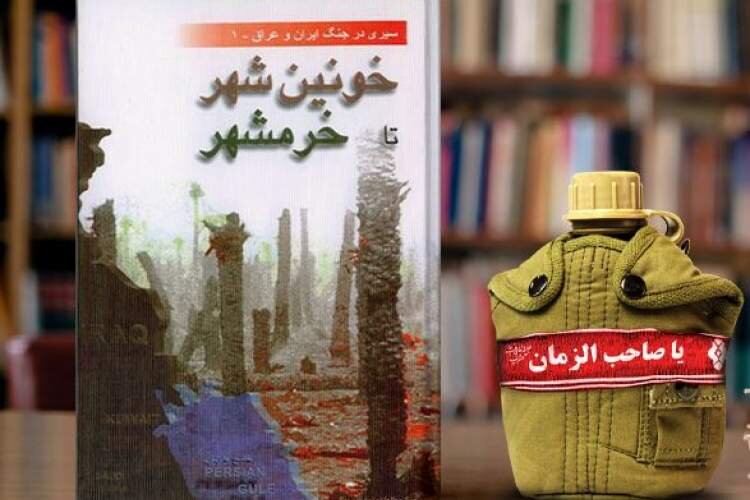Khordad’s third epic (24 May 1982) is a symbol of the unity and solidarity of Islamic combatants in defending Islamic security in Iran, and a clear model for all future generations defending the country’s independence.
Mohammad Dorudian’s *Khunin Shahr Ta Khorramshahr * provides a detailed political history of the early stages of the conflict in his five-part series *Journeys of the Iran and Iraq Wars *. Published by the Divine Defense Documents and Research Centre, the book meticulously examines the period from the Iraqi invasion in 1980 to the recapture of Khorramshahr in 1982.
The Dordien analyzes strategic military decisions and political developments to provide a compelling explanation of this critical period.
The book consists of three parts: the first Iraqi occupation and Iranian resistance, the liberation of Kolamshaal and the impact of victory.
The first section details the collapse of Khorramshahr, highlights resistance and examines Iraq’s strategy along with Iran’s efforts to reclaim the city.
The second detailed operation outlines the strategic stages, with the exception of Moqaddas, Thamen Al-A’emmeh, Tariq al-Qods, and Fath Ol-Mobin.

In the final section, we analyse how Khorramshahr’s liberation solidified Iran’s regional status, shifted the trajectory of war and increased the morale of the nation.
Khunin Shahr Ta Khorramshahr stands out in detailed documents of military and political manipulation, combining tactical analysis with direct accounts.
Its accessibility is valuable to historians, military enthusiasts, and general readers who are trying to understand the complexities of war.
Subsequent volumes cover advancements to FAO, operations at Shalamcheh, expansion to Halabja, and the conclusion of the war.
As a well-studied and well-balanced story, *Khunin Shahr ta Khorramshahr * is an essential resource for understanding the strategic victory that shaped Iran’s defence strategy and a must-see for anyone interested in the Iran-Iraq war.
Dorjian’s meticulous approach extends beyond mere chronology and delves into the socio-political landscape that influenced military action. He explores the internal dynamics within both Iran and Iraqi regimes and reveals how political calculations shaped battlefield decisions.
The book scrutinized the effectiveness of Iranian leadership during the initial turmoil of the invasion, assessed early failures and subsequent adaptations, resulting in subsequent adjustments and ultimately victory. Similarly, it assesses Iraq’s command structure and its strategic blunders, providing a nuanced perspective on failure to achieve their initial goals.
The authors do not shy away from dealing with the human costs of conflicts. The book focuses on strategic manipulation, but also incorporates explanations of the courage and resilience of Iranian soldiers and civilians during the siege of Khorramshahr.
These direct stories add a significant layer of emotional depth to historical analysis and root out strategic debates in the living experiences of those who have been directly affected by the war.
Furthermore, Khunin Shahr Ta Khorramshahr contributes greatly to understanding the international context of the Iran and Iraq wars.

The Dordia temporarily touches on the role of external forces in supplying weapons and intelligence on both sides, suggesting the complexity of the world’s political landscape that has fostered conflict.
This aspect is not a central focus of the volume, but it provides a valuable framework for further study of the international aspects of war.
The book’s detailed appendix, including maps, timelines and lists of key figures, further enhances its usefulness as a research tool. These supplementary materials provide readers with a comprehensive overview of the major events and personalities involved in the early stages of the war, making it easier to follow complex narratives.
Khunin Shahr Ta Khorramshahr ultimately serves as a fundamental text for those seeking a deeper understanding of the Iran and Iraq wars, providing a balanced and insightful account of pivotal periods in the history of both countries.
Its value lies not only in its detailed military analysis, but also in the contextualization of war within the broader political and social landscapes of the time.
Then-Iraqi President Saddam Hussein tore the 1975 Algerian agreement by appearing in front of Iraqi television cameras and announced the beginning of the Baasist regime’s invasion of the Islamic Republic.
On September 22, 1980, Saddam Hussein’s Baasist regime, supported by Western countries, invaded Iran.
The war began 19 months after the victory of the Islamic Revolution and angered global powers.
The Iran-Iraq War was the second longest war in the 20th century after the Vietnam War.
Iranians call Iraq’s resistance to the invasion of Iraq in the 1980s sacred defense.
Reported by Tohid Mahmoudpour

